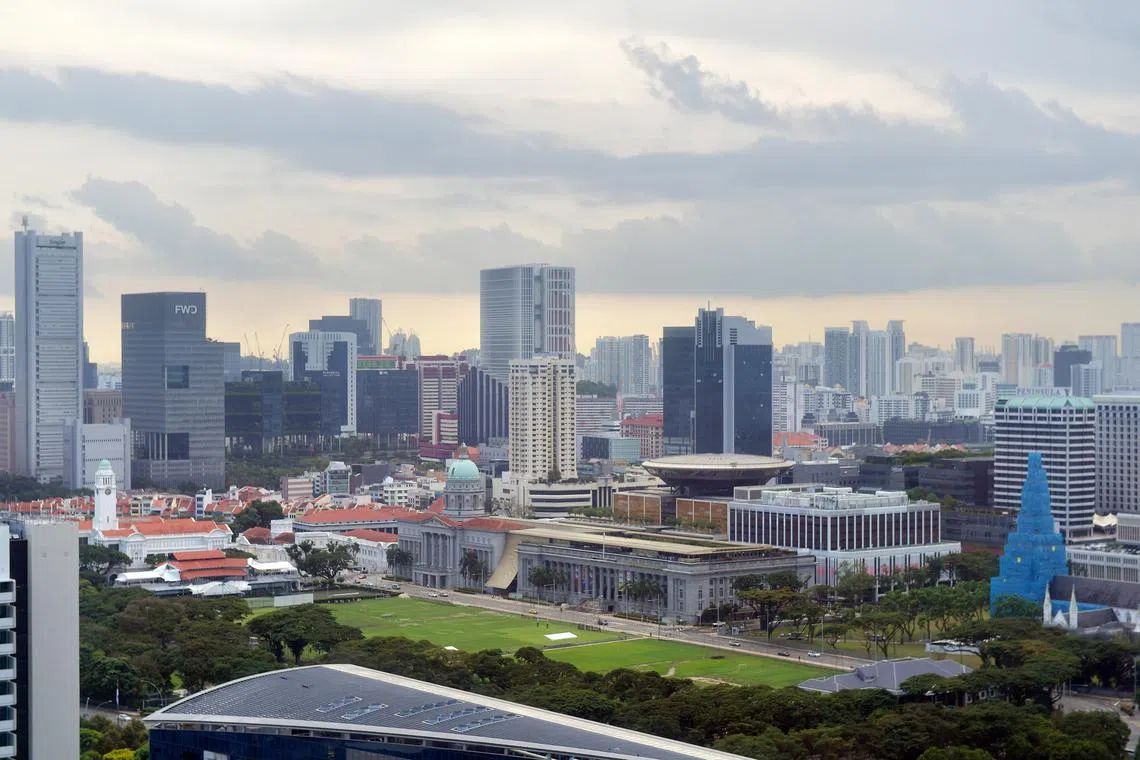Singapore climate actions a guide for Asia, says former World Bank economist
Sign up now: Get ST's newsletters delivered to your inbox

Singapore faces a real challenge in cutting emissions across the economy but will do its best to meet its targets.
ST PHOTO: ALPHONSUS CHERN
Follow topic:
SINGAPORE - Singapore’s steps to shore up its defences to secure its future against global warming are a guide for the region, a leading economist said on Tuesday.
The world has wasted decades in failing to cut emissions from fossil fuels and deforestation that are fuelling the climate crisis, and this has accelerated the risks to food production, triggered extreme weather, rising sea levels and heatwaves that in turn feed other crises, said Dr Vinod Thomas, a former senior vice-president at the World Bank.
He was speaking at the Lee Kuan Yew School of Public Policy during the launch of his book, Risk And Resilience In The Era Of Climate Change, attended by Minister for Sustainability and the Environment Grace Fu.
“Singapore is probably the world’s leader on adaptation plans as well as spending,” he said, referring to climate adaptations such as better drainage to fight floods and protecting coastlines against sea level rise.
He pointed to Singapore’s water recycling and desalination investments and plans to produce 30 per cent of nutritional needs locally by 2030 as key resilience strategies to learn from. These steps, plus Singapore’s Green Plan and the target to spend $100 billion this century to protect against rising sea levels was “a very powerful story”.
For Asia as a whole, the region must make rapid and dramatic changes to policies and investments to green its economies and tackle growing threats from climate change, he said.
“Having lost decades of inaction, now the time has come when transformative change alone can move the needle. It’s not enough to do marginal incremental changes, which are the comfort zone of economists,” said Dr Thomas, until recently a visiting professor at the National University of Singapore.
He said nations in the region have to urgently adopt much more ambitious climate targets and take steps such as imposing carbon taxes, subsidies for renewable energy and imposing restrictions on the use of fossil fuels. Singapore, for instance, has a carbon tax that rises progressively this decade.
He said the good news is that there are abundant climate solutions and investment opportunities. The bad news is that the crisis is man-made, and the fact that urgent action is needed was not clear in the minds of many people. That needs to change.
Rapid investment in cleaner economies in Asia and resilience to cope with harsher impacts could pay dividends in terms of health and economic benefits. “This could be a competitive advantage for Asia because the first mover certainly would be the one who gets the greatest benefits,” Dr Thomas said.
In response to his presentation, Ms Fu said dealing with risk and becoming more resilient was in Singapore’s DNA since inception.
“We have always been looking at the risks of our natural elements because of our history as a nation. From day one, we struggled with supply of labour, supply of resources, supply of water in particular. And we have always thought about how we should, as a nation, mitigate risks,” she said.
She said the finance sector has been a key driver in understanding the need for sustainable development and climate change risks.
“It is about studying the portfolio of all your bank loans, all your exposure to companies across the entire economy, and asking ourselves, what is the impact of a 1.5 deg C or 2 deg C increase (above pre-industrial levels) on your entire portfolio?
“The central banker starts thinking about that, and starts to add up the impact across all jurisdictions. That is quite a frightening eventuality,” she said.
“Just imagine a 2 deg C increase impacting your entire property portfolio, your entire manufacturing portfolio. For example, when there is an inundation of floods and droughts, what effect would that have on the food production sector, what would that do to your bank, your assets and the economy?”
She said Singapore has been boosting resilience to cope with future shocks, for instance, worsening droughts affecting water supplies in the region or bad weather threatening food imports.
“If you need to name one incident that makes us sit up and review our plans, it is the serious drought that we have experienced in recent years,” she said. Not just in Singapore but in Malaysia, too.
Food security was another priority as the nation accelerates efforts to produce more food locally.
“What if you have some risks that affect a large number of the countries which you import from? Will that happen? If so, how, where and what do we need to do about it? And so that’s the preparation process that we are going through now.”
Ms Fu said Singapore faced a real challenge in cutting emissions across the economy but would do its best to meet its targets. The Republic is also investing in carbon removal.
“So we are looking at how we can – in the process of desalination – remove carbon dioxide that’s already in the seawater. There are many very exciting areas of technological innovation.“


